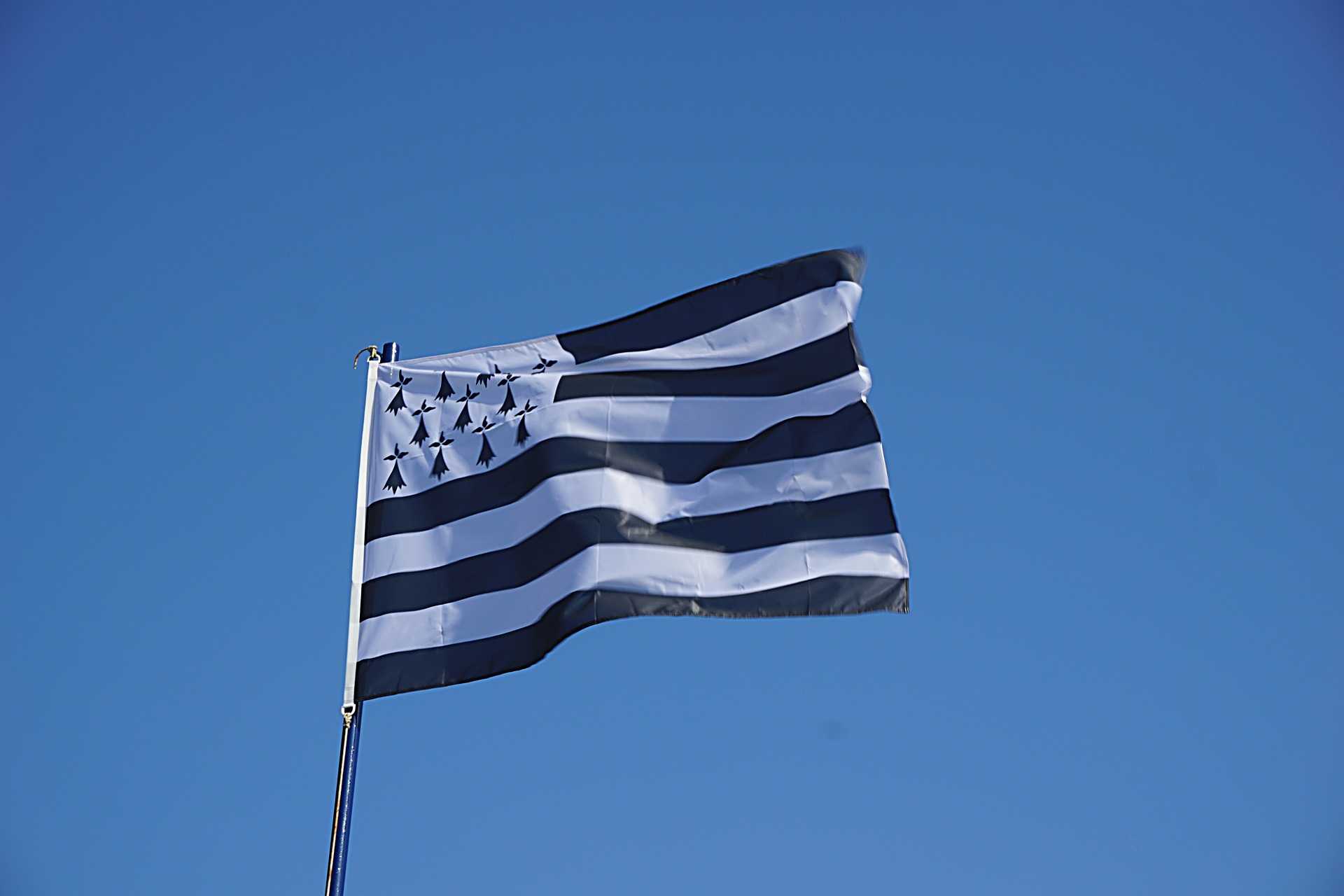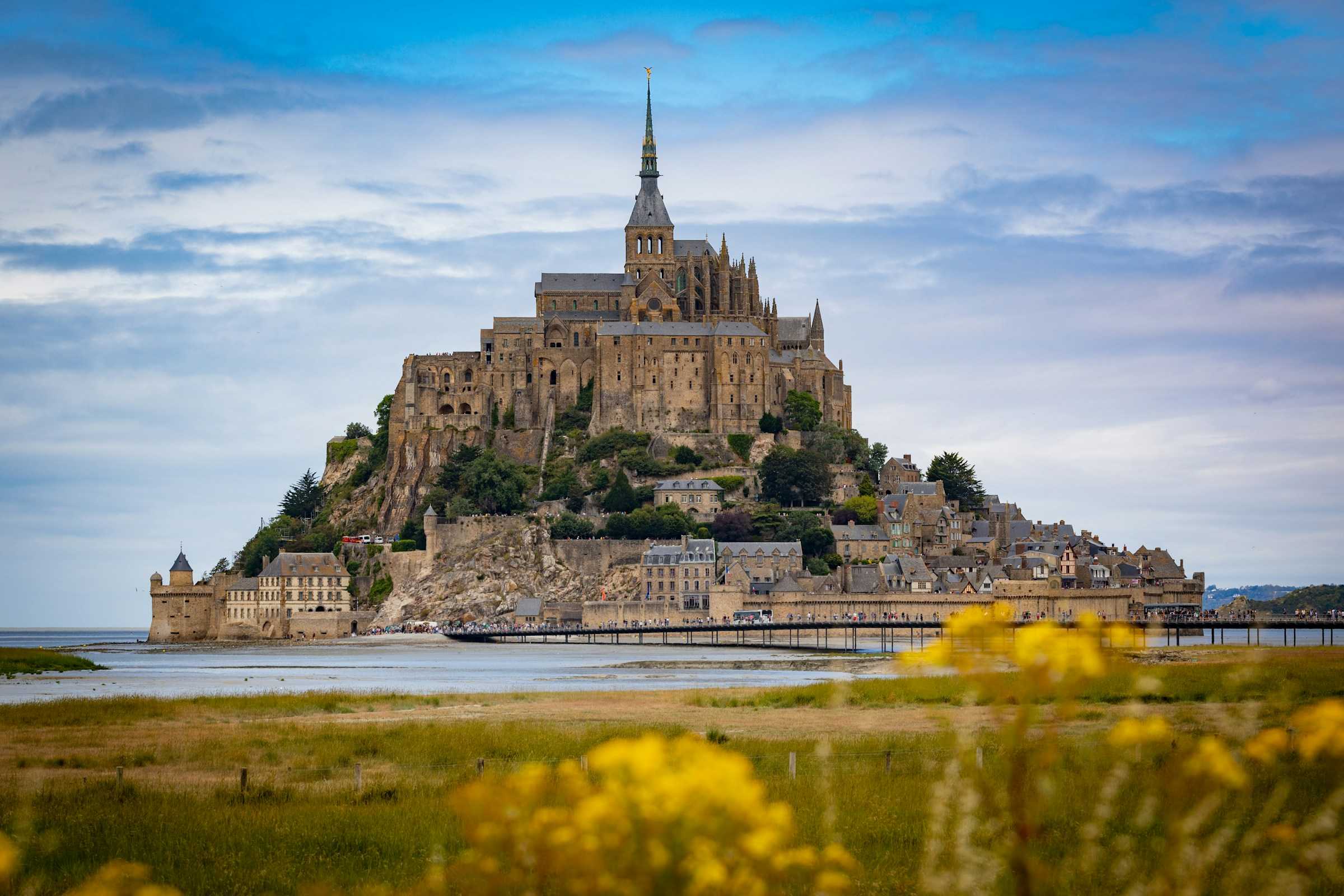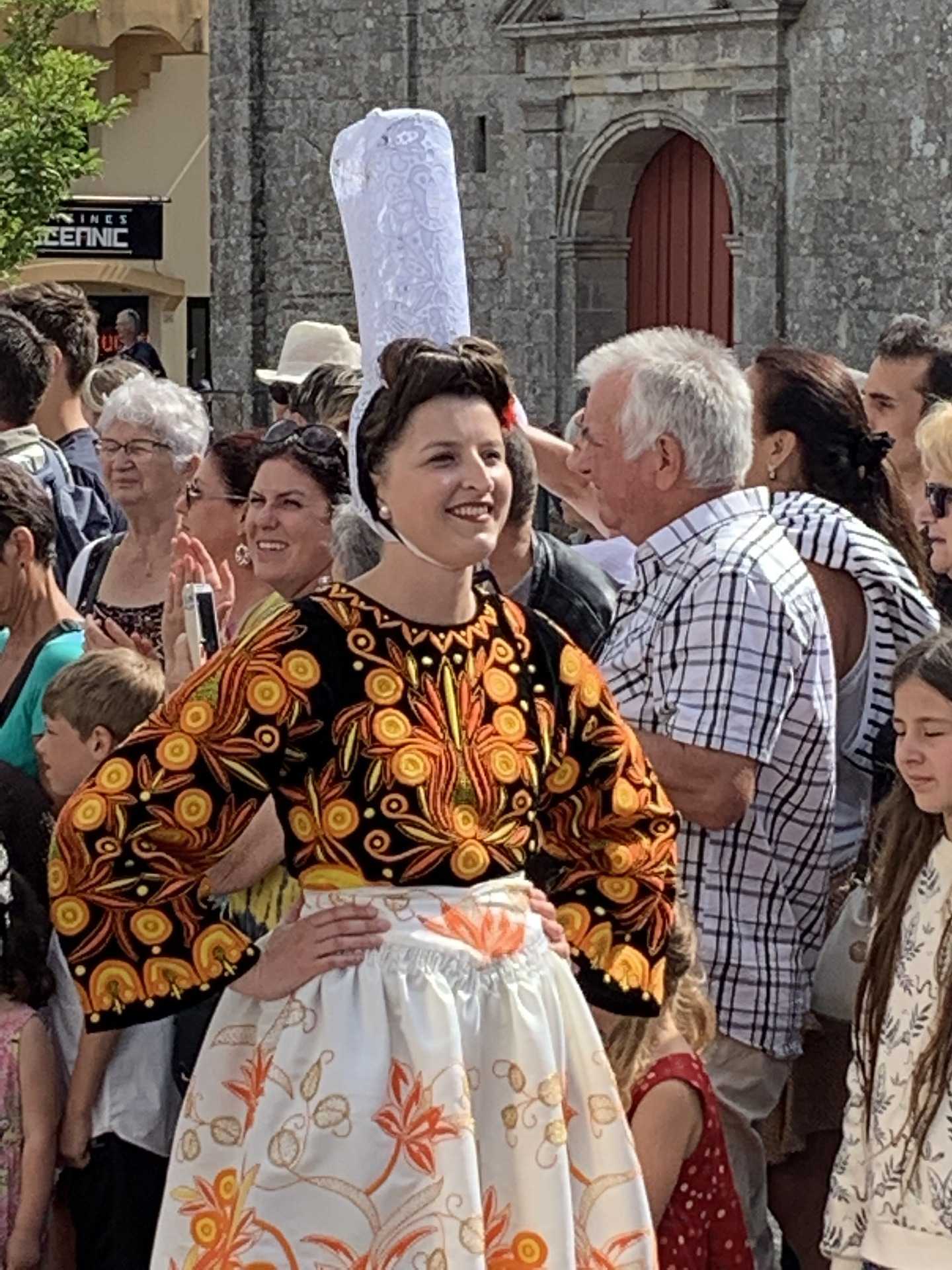
Discovering the Breton flag: A journey through the history of Brittany
Discover the rich history and symbolism behind the Brittany flag, from its origins to its modern-day significance. Explore its colors, motifs, and cultural importance.
The flag of Brittany is much more than a simple piece of fabric fluttering in the wind. It is a symbol deeply rooted in the history and culture of this fascinating region. Through its colors and patterns, the Breton flag tells a rich and complex history that goes back centuries.
Historical origins
The Breton flag, called Gwenn-ha-du in Breton, meaning white and black, has a rich and complex history. The history of the Breton flag dates back to medieval times, when Brittany was an independent duchy. At that time, the coat of arms of the ducal family of Brittany was decorated with ermine speckles, these small ermine tails symbolizing nobility and dignity. These coats of arms, over time, have become an emblem of identity for the Breton people, marking their belonging to a specific land and culture.
The evolution of the flag as we know it today began in the 19th century. At this time, the Breton nationalist movement grew stronger, with a desire to reaffirm Brittany's distinct cultural and political identity. It is in this context that the black and white horizontal bands were added to the flag, symbolizing resistance and purity respectively.
The introduction of these horizontal stripes was influenced by other European nationalist movements of the time, which used similar color combinations to represent their aspirations for independence. However, the Breton flag has retained its distinctive character thanks to the ermine speckles in the canton, always recalling its historical roots and its connection to the Breton nobility.
Thus, the historical origins of the Breton flag bear witness to both the antiquity of Breton culture and its ability to adapt and evolve over time. This flag has become much more than a simple symbol; it embodies the turbulent history and resilience of the Breton people through the centuries.
The meaning of colors and patterns
Each element of the Breton flag, from the colors to the patterns, carries a deep meaning that reflects the history and soul of Brittany.
White and black: Symbols of contrast and resistance
The main colors of the Breton flag, white and black, are not chosen at random. White represents purity and hope, evoking the light that breaks through the dark clouds of difficult times. It's a reminder that even in the darkest of times, there is always a glimmer of hope to be grasped.
On the other hand, black symbolizes resistance and strength. He embodies the determination and firmness of the Breton people in the face of adversity. Black is a reflection of past and present struggles, a reminder that Brittany has always been able to resist and persevere despite the challenges that stand in its way.
Ermine speckles: A heritage of nobility and dignity
Ermine speckles, also known as "ermine speckles", occupy a central place on the Breton flag. These designs represent a heritage of nobility and dignity that dates back to the time of the Dukes of Brittany.
The ermine was a revered animal in Breton culture, associated with both royalty and Brittany itself. The ermine speckles on the flag symbolize pride in Breton history and recall the close ties between the people and their land.
The harmony of the elements
Together, white, black and ermine speckles create a striking visual harmony on the Breton flag. They represent unity in diversity, reminding us that Brittany draws its strength from its cultural wealth and diversity.
Thus, each color and pattern of the Breton flag tells a deep and complex story that resonates with the soul of Brittany. They embody the region's core values, from purity and hope to resistance and dignity, offering insight into the unique identity and pride of the Breton people.
A story of resistance and pride
The Breton flag has witnessed many notable moments in Brittany's turbulent history, notably as a symbol of resistance and pride in the face of adversity. Over the centuries, the Bretons have often had to struggle to preserve their distinct cultural identity and political autonomy.
A particularly significant period in Breton history is the struggle for independence during the Middle Ages. Brittany was then an independent duchy with its own culture, language and traditions. The Breton flag was then brandished with pride by the Bretons in their resistance against attempts at invasion and domination by external powers, such as France and England.
Over the following centuries, Brittany experienced periods of conflict and uncertainty, notably during the Wars of Religion and the French Revolution. In these moments of instability, the Breton flag remained a symbol of resistance against oppression and defense of Breton identity.
Even during modern times, the Breton flag continues to play an important role in the political and cultural movements of the region. It is often brandished during demonstrations and rallies to express discontent or demand rights for Brittany and its people. In this sense, the Breton flag is much more than a simple decorative symbol; it embodies the continuing struggle for the preservation of Breton identity and the defense of the rights and interests of the region.
Thus, throughout the ages, the Breton flag has been a silent but powerful witness to the resilience and determination of the Breton people. It has become a symbol of unity and solidarity, reminding Bretons of their ancestral heritage and encouraging them to remain strong and proud of their history and culture.
The use of the flag in modern life
In modern life, the Breton flag retains a vibrant and significant presence. It is a central element during many events and cultural events, where it is proudly hoisted to represent Breton identity. Whether during folk music festivals, gastronomic fairs highlighting regional delicacies, or traditional religious celebrations, the Breton flag often flies above the festivities, reminding participants of their attachment to their land and their history.
Apart from special events, the Breton flag is also an omnipresent symbol in the daily landscape of the region. It can be found adorning public buildings and private homes, displaying the inhabitants' attachment to their cultural heritage. Local businesses often display the flag in their windows, emphasizing their Breton identity and drawing visitors' attention to regional products and specialties.
In sports, the Breton flag is also widely used to show support for local teams. Whether during football matches, sailboat races or cycling competitions, supporters proudly display the Breton flag to encourage their champions and show their regional pride.
In addition, the Breton flag has become a symbol of solidarity and recognition for Bretons living outside the region. Breton communities scattered across the world, whether in France or abroad, use the flag as a reminder of their common roots and as a means of maintaining a strong link with their land of origin.
Thus the Breton flag continues to play an essential role in the modern life of Brittany. It is much more than a simple piece of fabric, it is the living symbol of Breton identity, bringing together the inhabitants of the region around their common history and their shared pride.
Much more than a simple emblem
The flag of Brittany is much more than a simple emblem. It is a living symbol of Breton history, pride and identity. Through its colors and patterns, it tells a rich and complex story that unites the Breton people and testifies to their resilience throughout the ages. Whether flying atop a medieval castle or carried by an enthusiastic supporter at a sporting event, the Breton flag continues to embody the spirit and soul of Brittany.





